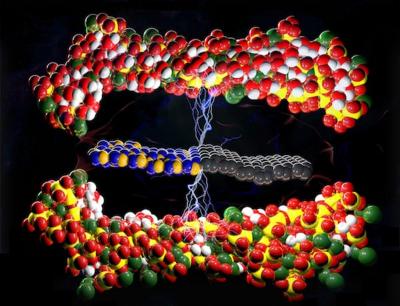
by MBF Admin | Feb 6, 2019 | 2D materials, Aerospace, AGM, Angstron Materials, Audio, Boron Nitride, Construction materials, Development, Graphene applications, Graphene composites, Investment, Products, Research, Rice University, Technical / Research
Rice University and Iran University of Science and Technology researchers have found a unique ceramic material that could act as a sensor for structures.The ceramic becomes more electrically conductive under elastic strain and less conductive under plastic strain, and...
by MBF Admin | Jun 18, 2018 | Development, Electronics, Graphene applications, Graphene batteries, Graphene Foam, Graphene Sensors, Investment, Medicine, Products, Research, Rice University, Supercapacitors, Technical / Research
Rice University scientists have developed a simple way to create conductive, 3D objects made of graphene foam. The resulting objects may offer new possibilities for energy storage and flexible electronic sensor applications, according to Rice chemist Prof. James...
by MBF Admin | Mar 28, 2018 | Development, Energy storage, Investment, Products, Research, Rice University
Researchers at Rice University have demonstrated the mechano-chemical assembly of functionalized graphene layers into 3D graphitic solids (“graphite pellets”) via room temperature and low energy consuming processing. The pellet material is reportedly stronger and...
by MBF Admin | Feb 27, 2018 | Development, Fuel Cells, Graphene applications, Investment, Products, Research, Rice University, Technical / Research
Rice University scientists, led by Prof. James Tour, along with teams from the University of Texas at San Antonio and the Chinese Academy of Sciences, Beijing, China have detected a deception in graphene catalysts that, until now, gone unnoticed. Graphene has been...
by MBF Admin | Feb 14, 2018 | Development, Graphene applications, Graphene Sensors, Graphene videos, Investment, Products, Research, Rice University, Technical / Research
Scientists at Rice University have enhanced their formerly invented LIG technique to produce what may become a new class of edible electronics. The Rice lab of Prof. James Tour is investigating ways to write graphene patterns onto food and other materials to embed...
by MBF Admin | Jan 7, 2018 | Carbon Nanotubes, Development, Fuel Cells, GNRs, Graphene applications, Investment, Products, Research, Rice University, Technical / Research
Researchers from Rice University have discovered that nitrogen-doped carbon nanotubes or modified graphene nanoribbons could potentially replace platinum, one of the most expensive facets in fuel cells, for performing fast oxygen reduction—a crucial reaction that...


